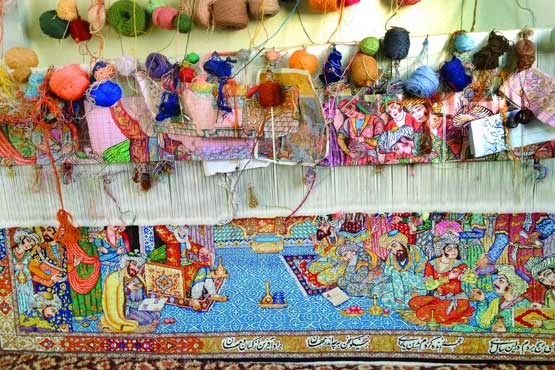Why Are Persian Rugs So Expensive?
High-Quality Persian rugs are renowned for their exquisite beauty, intricate designs, and unparalleled craftsmanship. However, these attributes also contribute to their high cost. Understanding why Persian rugs are so expensive requires a closer look at their creation process, materials, and cultural significance.
Hand-Knotted Expertise
The primary reason for the high price of Persian rugs is the meticulous hand-knotting process. Each individual strand of wool or silk is meticulously tied onto the rug’s foundation by hand. This painstaking process is incredibly time-consuming, often taking months or even years to complete a single rug. The level of detail and precision required in hand-knotting ensures that each Persian rug is a unique piece of art, reflecting the skill and dedication of the weaver.
Quality of Materials
The materials used in Persian rugs are another significant factor contributing to their cost. Persian rugs are typically made from high-quality, all-natural materials such as wool and silk. Wool provides durability and resilience, making the rugs long-lasting and robust. Silk, on the other hand, adds a luxurious sheen and softness, enhancing the rug’s aesthetic appeal. Additionally, the dyes used in Persian rugs are derived from natural sources, such as plants and insects, which produce rich, vibrant colours that do not fade easily. These natural materials are more expensive than synthetic alternatives but contribute to the rug’s longevity and beauty.
Intricate Designs and Patterns
Persian rugs are celebrated for their intricate designs and patterns, which often have deep symbolic meanings and cultural significance. The complexity of these designs requires exceptional skill and creativity. Each region in Iran has its own unique style, adding to the diversity and richness of Persian rugs. For instance, Tabriz rugs are known for their detailed floral designs, while Isfahan rugs are famous for their elegant and symmetrical patterns. The creation of such intricate designs demands a high level of artistry and expertise, further increasing the value of Persian rugs.
Cultural and Historical Significance
The cultural and historical significance of Persian rugs also plays a role in their high cost. These rugs are not just decorative items; they are a vital part of Iran’s cultural heritage, representing centuries of tradition and artistry. Historically, Persian rugs were symbols of status and wealth, gracing the floors of palaces and the homes of the elite. Today, they continue to be highly sought after by collectors and interior designers for their ability to elevate the look of any room. Owning a Persian rug is still considered a mark of good taste and sophistication.
Longevity and Investment Value
Investing in a Persian rug is not just about owning a beautiful piece of decor; it is also about acquiring an item that can increase in value over time. Well-maintained Persian rugs can last for generations, becoming treasured family heirlooms. The combination of their durability, timeless beauty, and cultural significance ensures that Persian rugs retain their value, making them a worthwhile investment.
Decision
In summary, Persian rugs are expensive due to their meticulous hand-knotted craftsmanship, high-quality materials, intricate designs, and cultural significance. These elements combine to create rugs that are not only stunning works of art but also valuable investments. The time, skill, and dedication involved in making each Persian rug justify their high cost, ensuring they remain prized possessions for generations to come.

